
Reinventing the General Plan
A Project of the California Planning Roundtable
With support from the American Planning Association, California Chapter
Great Model: City of Riverside
Featured Principles: Manage Change, Engage the Whole Community, Prioritize Action
- Context
- Active Outreach
- Tackling the Tough Issues
- Fast and Unified Planning
- Challenges and Lessons Learned
- Background Information
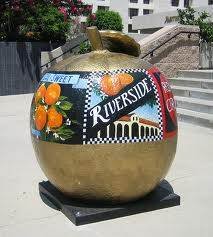
The City of Riverside General Plan successfully tackles key challenges and frustrations General Plan preparers confront. The Plan was written on an aggressive timeline, addressed the tough issues, engaged the community, and gained strong support from elected officials. The General Plan 2025 Program also integrated key implementation tools – the program consisted of simultaneous, comprehensive updates to the General Plan, Zoning Code, Subdivision Code, and new Citywide Design and Sign Guidelines. The entire General Plan 2025 Program was adopted in November 2007. In conjunction with the General Plan, a new specific plan the Magnolia Avenue Specific Plan, was developed for the major bus transit corridor where higher density and mixed use development was allowed by the General Plan.
The General Plan balances Riverside residents’ desires to both preserve Riverside as a rural community and accommodate growth. After decades of suburbanization throughout the region, the City realized that either the City would shape growth or growth will shape the City.
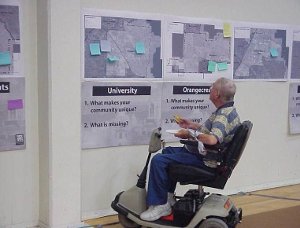
The Riverside General Plan, from the beginning, was designed to reflect the “heart and soul” of the community – a community that both embraces its rural and agricultural past and acknowledges the need to plan for population growth. The community has been a vital part of the General Plan 2025 Program since its inception. The Riverside staff operated on the principle that outreach should be “early and often” to assure that the plan reflects community concerns and values. The City publicized the General Plan to reach a diverse audience, including advertising in a Latino newspaper and in Black Voice and also issued a full-page color advertisement in the local newspaper. The City found that most participants learned about the General Plan through the full-page advertisement. The City’s General Plan staff also coordinated with the City’s Neighborhood Program and Parks, Recreation, and Community Services Department to publicize the General Plan through the other departments’ contact lists. By enlisting these other departments in the General Plan effort, the City was able to solicit input from members of the public, such as sports groups, that may not have otherwise been included in a planning outreach campaign.
Contrary to conventional belief, the City discovered that the public really does care about the General Plan; they just may not know they care. Too often, a General Plan is a distant thing, something that is ensconced in the faraway realm of City Hall. However, when residents are actively engaged, when their voices are heard and they see their ideas and concepts reflected in the document, they recognize the importance of the General Plan for their community. When residents are shown how General Plan concepts can become real influences on their lives, and how they can become active participants in the decision making process, the General Plan becomes a living document with meaning to more than just the “planner geeks.”
The General Plan process included three large scale community forums, along with numerous other ways for the community to be heard. Importantly, the Mayor and City Council attended each event and made themselves available to directly engage their constituents.
Even before beginning the actual General Plan effort, the City launched an extensive, community driven visioning program called Visioning Riverside in 2002. Visioning Riverside, first and foremost, was designed to engage all of Riverside’s residents, not just the same 150 people who typically participated. In addition to more traditional Citizen’s Advisory Committees and Focus Groups, the General Plan preparers trained “Visioneers” to take survey cards to small groups, and train those group members to take the survey cards to other groups with which they were involved. These Visioneers were able to go into the PTA groups and Mom’s Clubs and Little Leagues and Bible Studies to hear from the people who may not have been engaged in previous planning efforts. Before long, some 1,340 residents were engaged, providing over 5,000 comments. The focal point of the Visioning Riverside process was a Town Hall style meeting that drew nearly 500 participants and 50 community groups. The final Visioning Riverside document then became the foundation for the General Plan 2025 effort and set the model for community engagement. This vision, representing the consensus of people within the entire community, naturally evolves into five themes:
- HOW WE WORK (Economic and Workforce Development): Riversiders pursue the American Dream. We focus on creating economic development opportunities that provide high skilled, high paid employment for all members of the community.
- HOW WE PLAY (Arts/Culture/Entertainment/Parks/Recreation/Libraries/Physical Amenities): Riverside is an oasis. This City combines trees, water, and the arts to create a distinctive comfortable gathering place that enriches the lives of residents and visitors alike.
- HOW WE LIVE (Housing): We empower neighborhoods. We listen to each other and pay attention to the details because it matters. Neighborhoods enable the City and residents to work together to solve the needs of all.
- HOW WE GET AROUND (Transportation and Land Use): Riverside has responded to the traffic challenge by becoming a more self-contained city. Residents have easy access to an efficient, multi-option transportation system that enables them to meet their needs within the community.
- HOW WE LEARN (K-12 Education: Parental, Community and Business Involvement): Excellence in education is the key to economic growth. Riversiders work together to achieve quality education at all levels.
Knowing that people respond differently to various outreach efforts and are motivated by different things, the City of Riverside employed a wide variety of techniques designed to encourage their participation in the General Plan 2025. These techniques included a Citizen’s Advisory Committee, Technical Advisory Committee, several topic specific sub-committees, a dedicated website that included all meeting agendas, minutes, presentations, and comments, and a schedule of upcoming events. According to City staff, without a doubt the highlights of the outreach efforts were the two Citizen’s Congresses.
Citizens' Congresses
During the course of the Program, the City held two Citizens' Congresses to gather broad input from a community wide audience. The first Congress was held on September 13, 2003. More than 360 Riverside residents attended. This Congress was designed to garner input on the General Plan and maximize citizen ownership in development of the General Plan 2025. Since many people are not comfortable sharing in a large group setting, a number of individual stations were setup around the room that allowed the audience to participate in visual preference surveys, surveys on where they work and live, neighborhood assessments, barriers to getting around without an automobile, what entertainment is missing, and the list goes on. Each station was carefully designed to engage the participant and to offer a fun opportunity to share ideas and concerns.

In the middle of the room was a “Crossroads” station that gave participants the opportunity to further comment on each theme beyond the specific questions asked at the stations. Members of the City Council and the Mayor were at the Crossroads and participated in answering questions and gathering input from citizens on a one-on-one format. This provided residents with a chance to speak with their elected officials about these very important topics in a forum that was light and open. The Citizens' Congress Summary (October 2003) summarizes the comments received at each of the stations. Most importantly, the comments received at this Congress created the foundation for how the General Plan Program began to grow a “heart and a soul” of the City’s residents.
The City paid careful attention to the details. Parking was plentiful and convenient. The path to the gymnasium where the Congress was held was clearly marked, with volunteers nearby to assist. A staff member greeted everyone that entered the gym. Food was plentiful and free, and child care was provided. The City also offered those needing a little more structure the opportunity to participate in a 10 minute orientation session. The City tried to take away any excuse people could have for not attending.
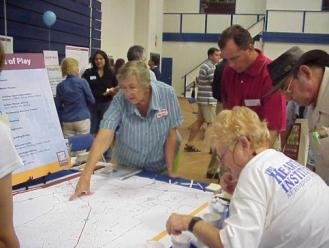
The second Congress was held on June 12, 2004. The theme of this event was “We Listened – Did We Get it Right?” Over 200 Riverside residents came to learn of the “Bold Moves” proposed in the updated General Plan 2025. Participants viewed a presentation by the Mayor, Planning Director, and the General Plan 2025 consultant team that illustrated how Riverside plans to grow smarter, preserving the resources that distinguish Riverside while accommodating new residents over the next 20 years. Care was taken to link the ideas presented at the second Citizen’s Congress to the comments shared by residents at the first Citizen’s Congress – to show that this was truly a plan “by and for the people.”
Following these presentations, the meeting was turned over to the audience to solicit their comments and questions. This was their opportunity to tell planners whether they had listened well enough and “got it right.” And they did! The comments generally supported the draft General Plan. The Citizens' Congress Summary (June 2004), summarizes the comments received.
Summary
Overall, the City held 142 meetings/workshops on the General Plan Program and received over 10,000 comments. In addition, over 6,000 notices were sent direct to property owners whose properties would be affected by possible changes to the General Plan or Zoning Code. With these community meetings, advertising, mass mailings, and the City's website, the City effectively involved its citizens in the Program to become “co-producers” of the General Plan. Planners at the City of Riverside report that residents now have a sense of ownership. They now care what happens to the Plan since they had a big role in building it. Nothing is more gratifying to the planners at the City of Riverside than hearing residents refer to the General Plan and ask that its principles be followed.
An active outreach campaign must also involve other City Departments. Other departments typically view the General Plan as solely a planners’ tool. However, a strong community outreach program necessarily engages other departments, including the City Manager and the City Council, adding strength and value to the Plan. All departments participated through representation on the Technical Advisory Committee (TAC) and many other smaller meetings to address individual elements particular to their expertise.
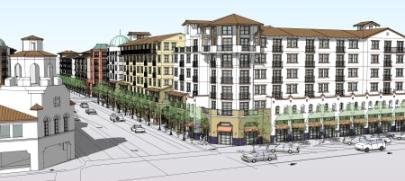 In a city with rural, agricultural, and hillside areas to protect amid increasing growth pressures, the General Plan needed to address growth issues head on. Planners realized that in order to tackle the major issues and gain political support, they would need to ask tough questions and get direction from the Planning Commission and City Council early in the process. Building on the vision of the community (Visioning Riverside), and the ideas of the consultant and staff, planners developed a plan to get early guidance from the Planning Commission and City Council. Billed as “Bold Moves,” staff held a joint study session with the City Council and Planning Commission. To achieve the community’s goals and vision, planners needed to break from past traditions. And if something was off-limits, staff needed to know now.
In a city with rural, agricultural, and hillside areas to protect amid increasing growth pressures, the General Plan needed to address growth issues head on. Planners realized that in order to tackle the major issues and gain political support, they would need to ask tough questions and get direction from the Planning Commission and City Council early in the process. Building on the vision of the community (Visioning Riverside), and the ideas of the consultant and staff, planners developed a plan to get early guidance from the Planning Commission and City Council. Billed as “Bold Moves,” staff held a joint study session with the City Council and Planning Commission. To achieve the community’s goals and vision, planners needed to break from past traditions. And if something was off-limits, staff needed to know now.
From the outset, the General Plan 2025 was intended by staff to not be another “cookie cutter” General Plan that just sat on a shelf. It was conceived as an innovative Plan that would simultaneously reflect the strong traditions of the City, and look to the future with vision and forethought. What worked in the past would not work in these changing times.
One of the major issues tackled was growth management, a complex and tough issue in Riverside. The Southern California Association of Governments (SCAG) projected that Riverside’s population would increase by 25% by 2025. It was clear that Riverside needed to manage growth before the growth managed the city. In the face of increasing land prices and decreasing land supplies, worsening congestion, aging infrastructure, and shrinking open space, it was clear that a new vision was needed.
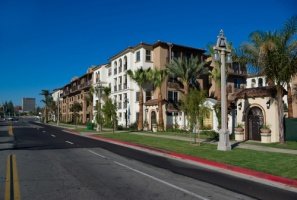 Like so many cities, Riverside had grown dependent on suburban sprawl. Planners had become accustomed to processing single family subdivisions and traditional stacked-flat apartments. Planners approached the City Council about Riverside’s controversial “slow growth” measure, which is based on Proposition R and Measure C, passed by Riverside voters in the 1970s. The slow growth measures maintain minimum lot sizes in rural greenbelt, agricultural, and hillside areas, and require that these regulations cannot be amended without voter approval. The measure maintains Riverside’s rural residential character in certain areas, which is an important value to many Riverside residents, but some residents hold that the slow growth measure poses a conflict with the city’s need to accommodate growth. There had been regular efforts to modify, or even eliminate, these voter initiatives. Planners asked the City Council to provide guidance and, based on the Council’s direction, left the measures as the voters approved them.
Like so many cities, Riverside had grown dependent on suburban sprawl. Planners had become accustomed to processing single family subdivisions and traditional stacked-flat apartments. Planners approached the City Council about Riverside’s controversial “slow growth” measure, which is based on Proposition R and Measure C, passed by Riverside voters in the 1970s. The slow growth measures maintain minimum lot sizes in rural greenbelt, agricultural, and hillside areas, and require that these regulations cannot be amended without voter approval. The measure maintains Riverside’s rural residential character in certain areas, which is an important value to many Riverside residents, but some residents hold that the slow growth measure poses a conflict with the city’s need to accommodate growth. There had been regular efforts to modify, or even eliminate, these voter initiatives. Planners asked the City Council to provide guidance and, based on the Council’s direction, left the measures as the voters approved them.
Working within the framework of the City’s slow growth measure, staff proposed a new vision for the locations where growth would occur to the City Council and Planning Commission. This vision was built on smart growth principals, and growing up rather than out in key locations downtown and along transit corridors. Staff proposed to accommodate the City’s fair share of the region’s growth with mixed-use developments, increased densities and heights, infill development, and transit-oriented development. Under this approach, the City would accommodate new growth through more urban development, while preserving the rural and agricultural areas protected by the slow growth measure. Staff’s proposal focused on new forms of growth in the downtown and along transportation corridors, including:
- Increased densities and building heights, from 29 units per acre to 40 and even 60 units per acre.
- Amended zoning regulations to make maximum allowable densities more attainable, such as reducing open space requirements.
- An infill development strategy for vacant and underutilized parcels close to urban services.
- Higher density, transit-oriented development along the City’s main transportation corridors, Magnolia Avenue and University Avenue.
- New forms of development, such as urban lofts and mixed-use development.
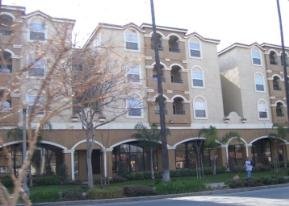 The City Council embraced the concept and allowed planners to develop the Smart Growth policies in the General Plan with confidence. Ultimately, three new mixed use land uses and zoning districts were approved. By providing for higher densities in the urban core, the City was able to protect arroyos, hillsides, and other open space in perpetuity, and plan for new growth and greater density within the parameters of the slow growth measure.
The City Council embraced the concept and allowed planners to develop the Smart Growth policies in the General Plan with confidence. Ultimately, three new mixed use land uses and zoning districts were approved. By providing for higher densities in the urban core, the City was able to protect arroyos, hillsides, and other open space in perpetuity, and plan for new growth and greater density within the parameters of the slow growth measure.
The City Council wanted to move quickly and comprehensively. City staff had merely 18 months to prepare the General Plan, Zoning Code, Subdivision Code, Citywide Design and Sign Guidelines, Implementation Plan, and a Specific Plan for a historic corridor. What is even more amazing is that the City captured the excitement of staff and met that objective. Importantly, by building all these related planning tools together, planners were able to create a comprehensive, unified Program.
| General Plan Program Timeline | |
| Draft Program: | (18-month period) |
| Program preparation began | August 2003 |
| Draft Program completed | February 2005 |
| First Planning Commission hearing held | February 2005 |
| Last Planning Commission hearing | August 2005 |
| City Council conceptually approved the General Plan Program and began revising the EIR | March 2006 |
| City Council certified the EIR for the General Plan Program | November 2007 |
Planners operated quickly, but did not cut corners. Although the timeline was aggressive, the City ran an extensive public outreach campaign; the City utilized a Citizen’s Advisory Committee and several topic-oriented sub-committees. The City included joint meetings of the Planning Commission and City Council to get direction and build support early in the process.
So, what does it take to accomplish this kind of minor miracle? And can it be replicated? The answer to the latter is a resounding, “yes.” But it is not for the timid or the faint of heart. There were several key reasons that it worked for Riverside:
- The City had completed Visioning Riverside and had a robust community vision, and a framework for public participation already in place. Through this process, the City had built trust and enthusiasm in the public that helped carry the General Plan through the approval process.
- Riverside has a strong history of good planning and assembled a strong staff team to guide and direct the General Plan 2025 Program. In addition to direct assistance from the Planning Director, the team consisted of a Principal Planner, a Senior Planner, and an Associate Planner, along with other staff assistance as needed, who spent the bulk of their time on the project. All of the staff members involved in the General Plan were excited to be working on the project and believed in the importance of the General Plan.
- The City was able to recruit and hire a strong and experienced consultant team that was able and willing to put in the time and effort to meet these demands. The expectations were clear from the beginning and the consultant team honored their commitments. They became an extension of staff and worked closely with staff, bringing a breadth of experience to the table to complement staff’s knowledge of the City.
- Finally, the City maintained its focus. The City knew what was expected, accepted the challenge and simply made it happen. Failing to meet the deadline was not an option.
The 18 month deadline was to complete the draft document, and planners wanted to make sure the draft was completed without curtailing public comment. Over the following year, the Planning Commission conducted 18 public hearings, all in the evening and accessible to the community, before it passed the document on to the City Council for final approval and certification of the EIR. The Planning Commission’s review was intense and detailed, primarily at a policy level, with an immense public participation component. Commissioners really listened to the input received by the public, and by updating the Zoning and Subdivision Codes simultaneously with the General Plan the public was able to see that policies would be implemented.
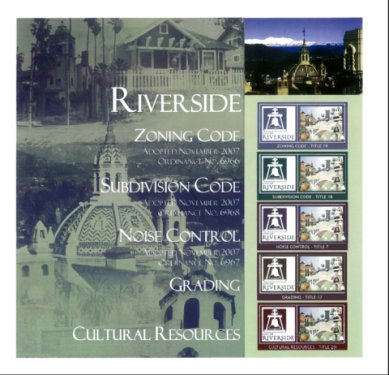 This unified approach to preparing the Program allowed the City to build credibility for planning among the public and, because the public saw that key concerns were being resolved in the zoning, ultimately allowed the City to make bolder moves. The frequent Planning Commission hearings were very important for resolving issues that arose in the development of the General Plan Program and for maintaining an efficient and responsive process. For example, during the preparation of the General Plan the City decided to remove the heavy industrial land use category and change the designation for heavy industrial parcels to light industrial. When existing business owners operating in the heavy industrial zone expressed concerns about becoming non-conforming uses, the City amended the light industrial zone to allow the uses that already existed in the heavy industrial zone. The ability of the staff, the Planning Commission and the public to refine the zoning code to resolve these concerns with the impact of this major land-use change on existing businesses enabled this important general plan land-use change to move forward. The heavy lifting done by the Planning Commission allowed the General Plan 2025 Program to go through the City Council approval process with very few negative few comments.
This unified approach to preparing the Program allowed the City to build credibility for planning among the public and, because the public saw that key concerns were being resolved in the zoning, ultimately allowed the City to make bolder moves. The frequent Planning Commission hearings were very important for resolving issues that arose in the development of the General Plan Program and for maintaining an efficient and responsive process. For example, during the preparation of the General Plan the City decided to remove the heavy industrial land use category and change the designation for heavy industrial parcels to light industrial. When existing business owners operating in the heavy industrial zone expressed concerns about becoming non-conforming uses, the City amended the light industrial zone to allow the uses that already existed in the heavy industrial zone. The ability of the staff, the Planning Commission and the public to refine the zoning code to resolve these concerns with the impact of this major land-use change on existing businesses enabled this important general plan land-use change to move forward. The heavy lifting done by the Planning Commission allowed the General Plan 2025 Program to go through the City Council approval process with very few negative few comments.
Riverside planners are often asked if it would be wise to tackle such a large project, bundling comprehensive updates to the General Plan, Zoning Code, Subdivision Code, and Citywide Design Guidelines into a single Program, let alone do it in 18 months. By building on the momentum of the General Plan, and capitalizing on their creative energy, planners were able to tier off of the General Plan to ensure that the Zoning Code, Subdivision Code, and Design Guidelines were aligned to implement the General Plan in a consistent manner. The City has since learned that having the implementing tools of the General Plan 2025 already consistent with the General Plan 2025 at the time of adoption has been very useful in implementing the Plan, and allowed for efficiencies that would not be possible when completing each update separately
-
Choose consultants carefully. Conduct a rigorous RFP process, and make sure that the consultant is a good fit for your community.
-
Choose staff carefully. As good as your General Plan consultant may be, you will need qualified in-house staff to shepherd the project and provide the local perspective and the continuity with the City Council. Staff recognized that the General Plan is a legacy for the future, and treated it as such. Staff were eager to improve the plan and its implementing tools to aid in their day-to-day work. Their enthusiasm helped to ensure that the plan was developed by and for Riverside’s community, and helped to keep the project on schedule.
-
Carefully consider updating your Zoning and Subdivision codes at the same time as the General Plan. There are huge rewards for doing so, but it will require a real commitment and a lot of hard work. By updating Zoning and Subdivision codes along with the General Plan, the City of Riverside was able to build credibility for planning with the public, by implementing zoning updates along with policy amendments. This allowed the City to make bolder moves, because the public saw that their concerns were addressed and that planners were taking their input seriously.
-
Go fast and maintain your momentum. Set a deadline and strive to meet it. Having a firm deadline can be very useful since you can ride the momentum and keep costs down, but will require a laser beam focus and a bit of luck. For the City of Riverside, moving quickly in preparing the General Plan and Zoning updates meant that the EIR needed to be revised at the end of the process.
-
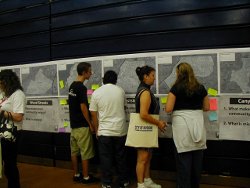 Involve the community. Don’t just invite them, find creative ways to solicit their thoughts and actively engage them in the process. Not only will they have ownership in the document when it is completed, but you will find they have good ideas. The numerous Planning Commission hearings (18 in six months!) showed the Commission’s willingness to work through key issues and build trust with the community. Assume that the Plan will be read and implemented. You can make this a self-fulfilling prophesy by involving the community, elected officials, and your colleagues in other City departments in the preparation of the plan. To be involved in the preparation is to share ownership.
Involve the community. Don’t just invite them, find creative ways to solicit their thoughts and actively engage them in the process. Not only will they have ownership in the document when it is completed, but you will find they have good ideas. The numerous Planning Commission hearings (18 in six months!) showed the Commission’s willingness to work through key issues and build trust with the community. Assume that the Plan will be read and implemented. You can make this a self-fulfilling prophesy by involving the community, elected officials, and your colleagues in other City departments in the preparation of the plan. To be involved in the preparation is to share ownership. -
Be creative, but don’t reinvent the wheel. Study what others have done. Educate your staff, the Planning Commission, and City Council on best practices. Do your research, and then take the threads of the great ideas and weave them into your own quilt. Make it unique to your city by including optional elements that speak to your community values. If the City of Riverside could do it again, staff report that they would go on field trips and sponsor a speaker series.
-
Keep it visible. Develop an implementation plan that identifies key players and sets deadlines, then report on it at least annually. Keep it current. Reference the General Plan wherever you can. It needs to be forethought, not an afterthought. In Riverside, the City Council continues to emphasize the importance of the General Plan and has directed staff to prepare an implementation plan for a General Plan element each year.
Community Description
The rapidly growing City of Riverside currently ranks as the 12th largest city in California and 6th largest in Southern California. With an estimated population of 304,051 residents in 81.53 square miles, Riverside is the largest city in the Inland Empire, one of the fastest growing regions in the United States.
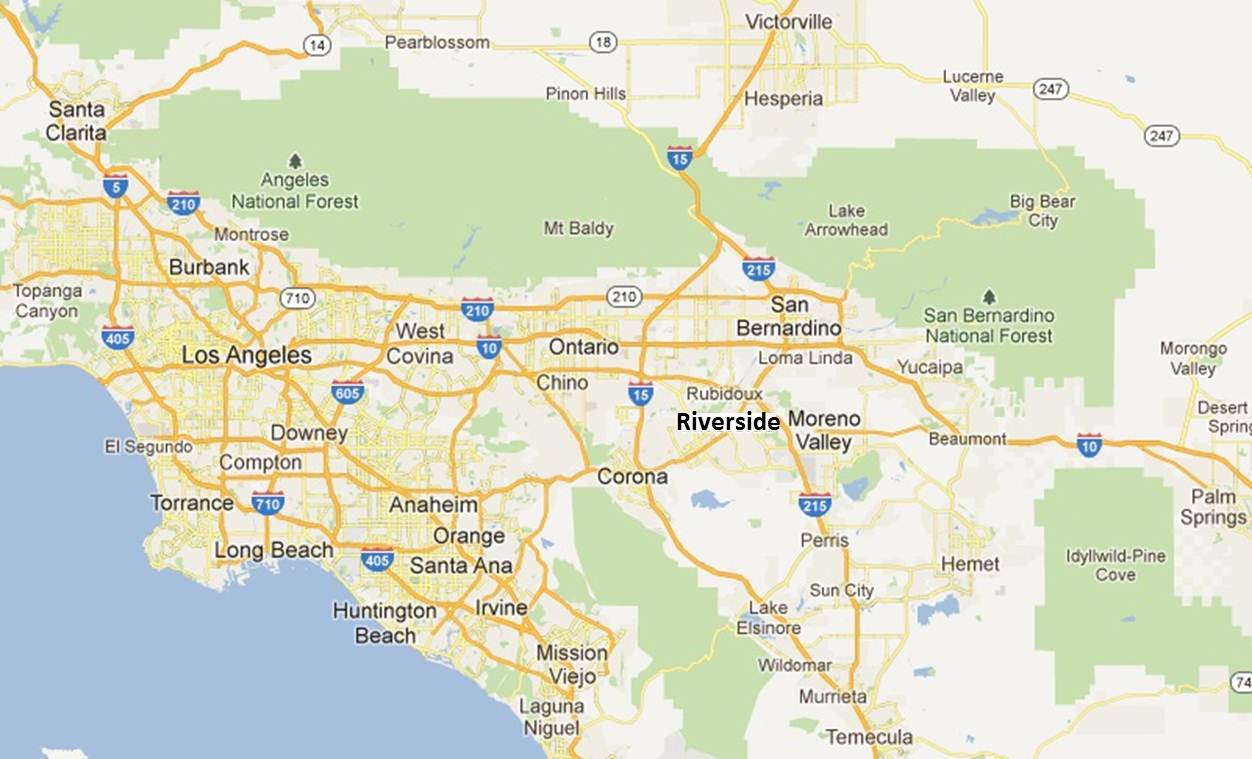
Riverside is home to four universities and colleges with a student population of approximately 50,000 students. The University of California, Riverside, California Baptist University, La Sierra University, and Riverside Community College offer specialized training, research partnerships, and a high-technology environment to support emerging and innovative companies.
 As an important financial and professional center, Riverside offers the support of numerous legal, accounting, brokerage, architectural, engineering, and technology firms as well as banking institutions. It is also the county seat for the fastest growing county in California.
As an important financial and professional center, Riverside offers the support of numerous legal, accounting, brokerage, architectural, engineering, and technology firms as well as banking institutions. It is also the county seat for the fastest growing county in California.
Businesses benefit from Riverside’s freeway system, BNSF and UPSP rail access, high-speed fiberoptic telecommunications, city-owned electrical and water systems, and a large corporate jet and general aviation airport.
Timeframe of Program Development
The City of Riverside General Plan 2025 Program is an innovative Plan, consisting of completely integrated comprehensive updates to the General Plan, Zoning Code, Subdivision Code, and new Citywide Design and Sign Guidelines. Work on the General Plan 2025 Program began in March of 2003 with the entire Program adopted in November of 2007. In addition, a new specific plan was developed, the Magnolia Avenue Specific Plan, which followed a different approval track. Magnolia Avenue is one of the primary east/west streets in the City and will be the major Bus Rapid Transit corrid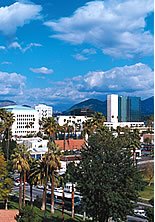 or when taken in conjunction with University Avenue. In fact, these two corridors make up what is called the “L” Corridor due to their shape. In the General Plan, this corridor is the major focus of the City’s Very High and Mixed Use land use designations.
or when taken in conjunction with University Avenue. In fact, these two corridors make up what is called the “L” Corridor due to their shape. In the General Plan, this corridor is the major focus of the City’s Very High and Mixed Use land use designations.
The Program was given an 18-month timeline to get to complete the draft Plan. With extraordinary effort, this deadline was achieved. Following the 18-month period, the Planning Commission, realizing the importance of its role to ensure that the Program was completely vetted with the community, held 18 public hearings on the program and spent quality time reviewing the documents with the public and staff. Before the documents were finally approved by City Council, staff and consultants reviewed the EIR to ensure that all necessary changes had been made to the environmental documentation and that the document was ready for any possible challenges.
Overall Vision of the Program
Visioning Riverside (Appendix B of the General Plan) began in 2002 with innovative outreach efforts designed to reach the “silent majority.” Thousands of residents helped set forth a vision of Riverside that is to be developed over the next two decades. This effort became the springboard for the General Plan 2025 Program, a Plan that aims to guide projected growth in a way that will maintain and enhance the community’s major assets and distinctive qualities.
Public Participation and Stakeholder Involvement
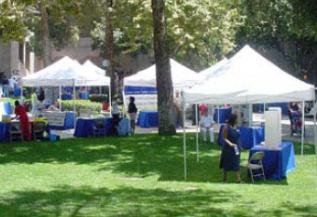 The General Plan 2025 Program was been designed by the community and reflects the values of the community. The community involvement process began with the Vision (Visioning Riverside - Appendix B of the General Plan). At the start of the Program, the City Council endorsed an advisory committee/subcommittee structure as the basis for preparation of the General Plan 2025 Program. The objectives and policies in the Plan are based on input received from broad segments of the population, including the Citizens' Advisory Committee, Technical Advisory Committee, Education Subcommittee, Arts and Culture Subcommittee, Magnolia/Market Subcommittee, thirteen Topic Group meetings, and the residents of Riverside who shared their ideas at two community-wide Citizens' Congresses attended by over 600 persons. Over 4,300 residents attended 142 meetings, providing over 10,000 comments that have been incorporated into the Program where applicable.
The General Plan 2025 Program was been designed by the community and reflects the values of the community. The community involvement process began with the Vision (Visioning Riverside - Appendix B of the General Plan). At the start of the Program, the City Council endorsed an advisory committee/subcommittee structure as the basis for preparation of the General Plan 2025 Program. The objectives and policies in the Plan are based on input received from broad segments of the population, including the Citizens' Advisory Committee, Technical Advisory Committee, Education Subcommittee, Arts and Culture Subcommittee, Magnolia/Market Subcommittee, thirteen Topic Group meetings, and the residents of Riverside who shared their ideas at two community-wide Citizens' Congresses attended by over 600 persons. Over 4,300 residents attended 142 meetings, providing over 10,000 comments that have been incorporated into the Program where applicable.
The Plan was developed based on input received by Riverside residents. The key themes presented illustrated Riverside's vision:
- The City will grow, but will grow smarter. The City will shape growth rather than let growth shape the City.
- Growth will respect and enhance Riverside's natural and historic resources.
- Traffic will increase, even with no growth in the City of Riverside, but will be managed more effectively.
- Riverside will grow as a major regional employment center.
- Riverside remains a preeminent regional education center.
- Riverside's stature as the region's cultural center is enhanced.
- Riverside continues to move toward cleaner air.
The following committees and subcommittees met a total of 29 times over the period of April 22, 2003 to June 30, 2004.
Technical Advisory Committee (TAC)
The first committee meeting began with a special meeting of the TAC to brainstorm ideas for the various Program documents, using the Visioning Riverside document as the foundation. The TAC was a 23-member committee made up of members of affected departments, transportation agencies, air pollution experts, biological experts, historic resources experts, and neighboring communities. Over the following months, the TAC met another six times providing valuable input on the Program.
Citizen Advisory Committee (CAC)
The CAC met thirteen times over the period of June 9, 2003 to May 17, 2004. The CAC was a 21-member committee. The members were appointed by the City Council and represented the City Planning Commission, the Cultural Heritage Board, the Design Review Board, the wards at large, the Arts Subcommittee, the Education Subcommittee, the Magnolia/Market Subcommittee, and the Riverside Neighborhood Partnership. The CAC reviewed and approved the General Plan 2025 and forwarded it to the City Planning Commission for its review and recommendations.
Arts Subcommittee
Before meeting with the Arts Subcommittee, the consultants preparing the Arts and Culture Element, The Arroyo Group (TAG), held numerous interviews with the key people involved in arts and culture throughout the city. The information garnered from these interviews was used to prepare for the meetings with the Arts Subcommittee.
The Arts Subcommittee was a 19-member committee made up of members from the three Universities and the City College, the local newspaper, the League of California Cities, the two school districts, the County Office of Education, the Chambers of Commerce, the Art Museum, the Municipal Auditorium, and various artists and art related organizations. The Subcommittee met four times, providing information to develop the Arts and Culture Element. In the course of reviewing the Element, the Subcommittee took special care to insure that the Element covered arts and culture throughout the City and not just in the Downtown area, as had been traditionally the case. In the course of its meetings, the Subcommittee had a special presentation on cultural villages and this concept was included in the Element.
Upon completion of its review, the Arts Subcommittee approved the Element and forwarded it to the City Planning Commission for their review and recommendations.
Education Subcommittee
The Education Subcommittee met three times, providing information for and reviewing the Education Element. The committee was made up of seven members who represented the two school districts, four colleges and universities, and County Office of Education. The Education Subcommittee reviewed and approved this Element and forwarded it to the City Planning Commission for its review and recommendations.
Magnolia/Market Subcommittee
The Magnolia/Market Subcommittee met three times, providing input on how to best integrate the concepts outlined in the 1999 Moule & Polyzoides Magnolia/Market Corridor Study into the General Plan. The committee had nine members from businesses and organizations along the Avenue. The General Plan 2025 Program included the task of preparing an implementation plan for this study. Throughout the course of the meetings, it became apparent that a specific plan would be the best tool to allow for maximum flexibility in constructing zoning and development standards for this unique corridor. On December 16, 2003, the City Council authorized preparation of the Magnolia Avenue Specific Plan in conjunction with the General Plan 2025 Program. This document trailed the General Plan 2025 Program, but the proposed land uses were reflected in the General Plan 2025. To kick-off the specific plan process, a workshop was held at California Baptist University on June 30, 2004. Over 120 people attended this workshop. A second workshop was held on April 5, 2007, at which a draft version of the plan was presented to the public. Forty-eight people attended this 2-hour workshop and provided 12 additional ideas for inclusion in the Plan. On February 11, 2008, 42 residents attended a third workshop. At this workshop, a summary of the Draft Specific Plan was presented outlining the primary vision of the Plan with an overview of the Magnolia Avenue Districts. Following the presentation, the workshop broke into six stations focusing on each of the Districts that make up the Plan. All comments and input provided were summarized at the end of the workshop. The comments centered on concerns about growth, high-density development, and traffic.
Topic Group Meetings
In an effort to solicit input from a broad variety of people and organizations involved in specialized areas of interest to the General Plan 2025 Program, nine different topic group meetings were held over the period of June 2, 2003 to August 1, 2003. Multiple sources were used to compile invitation lists to these meetings and approximately 400 invitations were sent out. The nine topic group meetings were focused on:
- Youth – 18 members
- Environmental/Open Space – 4 members
- Recreational Interests/Libraries – 4 members
- Public Safety – 4 members
- Zoning/Subdivision – 12 members
- Counties/Cities – 8 members
- Social Services – 6 members
- Neighborhoods – 9 members
- Economic Development – 6 members
Valuable information was provided at each of the meetings.
Other City/County Department’s Involvement
The General Plan 2025 Program was developed in close coordination with interested jurisdictions, agencies, and programs, including:
- The Southern California Association of Governments (SCAG), including the SCAG Compass Blueprint 2% Strategy;
- The Western Riverside Council of Governments;
- The Riverside County Transportation Commission;
- Riverside County;
- Neighboring Cities;
- The Riverside County Multiple Species Habitat Conservation Plan;
- The Riverside County Transportation Uniform Mitigation Fee;
- The South Coast Air Quality Management District; and
- Many other plans and programs that affect the City of Riverside.
Legal and Policy Context
The General Plan 2025 Program meets all of the requirements of California Planning law. In addition, the Program received the approval of the State Attorney General’s Office for compliance with greenhouse gas reduction requirements. Although a lawsuit was brought about by a group called the “Friends of Riverside’s Hills,” all issues were later resolved with a Settlement Agreement and the lawsuit was dismissed.
Consideration of Regional Issues
The City participated in the SCAG Compass Blueprint 2% Strategy, which was incorporated into the General Plan 2025 Program through the Magnolia Avenue Specific Plan with its design around Bus Rapid Transit (BRT) and policies for development around transit stations. The entire General Plan 2025 Program is designed around smart growth principles, policies, and programs that deal with mobility, livability, prosperity and sustainability.
Work continues, through a coordinated effort with the SCAG, Western Regional Council of Governments (WRCOG), and its member cities, and work has started on the Sustainable Community Strategy (SCS) process in compliance with Senate Bill (SB) 375. The solid foundation of the General Plan 2025 Program, a coordinated effort of General Plan, Zoning Code, and Subdivision Code updates developed to work harmoniously with one another and based upon sustainability principles, should make this process successful.
Community Reaction
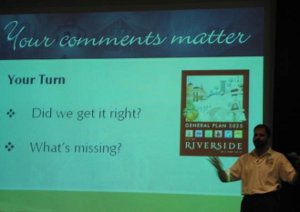 From the beginning, there was strong community support for the General Plan 2025 Program. Hundreds of people inspired by Visioning Riverside stayed engaged when the City transitioned to the General Plan 2025 Program effort. Through the community workshops and other outreach efforts, as well as the 18 Planning Commission hearings, community members felt their concerns were heard and addressed. The fact that there was almost no community opposition at the City Council hearings is great testimony to the community buy-in to the Program.
From the beginning, there was strong community support for the General Plan 2025 Program. Hundreds of people inspired by Visioning Riverside stayed engaged when the City transitioned to the General Plan 2025 Program effort. Through the community workshops and other outreach efforts, as well as the 18 Planning Commission hearings, community members felt their concerns were heard and addressed. The fact that there was almost no community opposition at the City Council hearings is great testimony to the community buy-in to the Program.
Even more important, the Plan is being used. The City Council, City management, and the public routinely reference the General Plan. Individual neighborhoods seek to become the next area of the City to be targeted for neighborhood planning. Annual reports are well received by the City Council and the public, and progress is being made on implementing policies and objectives.
Keeping on Track
The fact that the General Plan 2025 Program was not just an update of the General Plan but rather an integrated comprehensive update to the General Plan, Zoning Code, Subdivision Code, and new Citywide Design and Sign Guidelines makes the Program a very unique program indeed. The program also included a new specific plan, the Magnolia Avenue Specific Plan, which was developed under a different approval track. The ability to update the major implementing tools, Zoning Code, Subdivision Code, and Design Guidelines comprehensively with the General Plan is something cities are seldom able to complete within a few years of one another, much less at the same time. Having the implementing tools of the General Plan 2025 already consistent with the General Plan 2025 at the time of adoption has been very significant in terms of implementation. To make sure that the General Plan 2025 Program appropriately guides the development of the City for years to come, a detailed Implementation Plan was developed as an integral part of the Program (Appendix A). It is an aggressive Plan that demands action and assigns accountability. It “names names” and gives deadlines. Moreover, the City Council receives annual status reports and workshops on various elements of the General Plan. Adherence to the Implementation Plan will ensure that the objectives, policies, and vision of the 2025 Program are advanced, now and through the 2025 Plan horizon.
Implementation Features
See the ”Keeping on Track” section.
Connection to Jurisdictional Budget
The General Plan 2025 Program itself supports sustainability and conservation. The Program is also used for Department strategic plans and the development of the Capital Improvement Plan.
Adaptability
The General Plan 2025 Program permits flexibility in many ways, including the annual reviews and Implementation Plan.
Accessibility
From the start of the General Plan 2025 Program, the City used its website to share information with the public and collect information and comments from the public. The website provided information on all committee meetings, including agendas, PowerPoint presentations, and minutes. Access to event materials from the Citizens' Congresses and complete copies of the draft documents could be found on the website. In addition, the website was used for registration purposes for the Citizens' Congresses and the public could e-mail City staff their comments throughout the process. Comments on the website design were favorable. Since the release of the General Plan 2025 Program, the Program documents have been available on the website as PDFs to make them easy for the public to review. The City has also provided the documents on CDs that are free to the public.
Graphics and Presentation Quality
All of the elements are crossed referenced using cross reference boxes in the margins. Because the General Plan is built on smart growth principles tying housing to mobility to jobs (long before SB 375), all of the elements are intertwined.
Of particular note is the attention to detail that is apparent throughout the entire General Plan 2025 Program. It is logically organized and easy to navigate to assist the reader in quickly obtaining accurate information. It makes extensive use of cross reference citations to guide readers to related information in accompanying resources, as well as the generous use of maps, diagrams, tables, figures, and illustrations. In addition, the Citywide Design and Sign Guidelines provide a solid basis for insisting on high-quality design and architecture for new development throughout the City.
Besides the cross references, the General Plan 2025 uses an easy-to-read layout with outside margins that are not only used for cross referencing but also for illustrations and additional information.
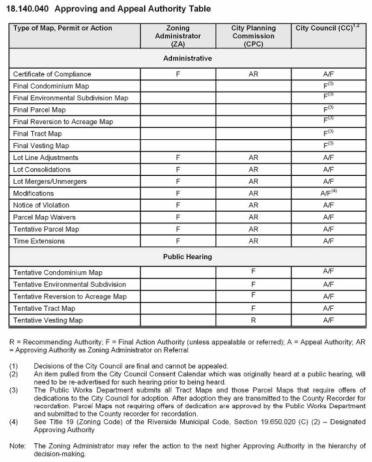 The Zoning Code component also makes use of the Permitted Uses Table 19.150.020 (A), which cross-references the user back to the appropriate sections of the Zoning Code for needed information. With this table, the user has all the basic information needed to know the corresponding zones in the Zoning Code that permit the uses in the General Plan.
The Zoning Code component also makes use of the Permitted Uses Table 19.150.020 (A), which cross-references the user back to the appropriate sections of the Zoning Code for needed information. With this table, the user has all the basic information needed to know the corresponding zones in the Zoning Code that permit the uses in the General Plan.
Tables are also used in both the Zoning Code and Subdivision Code to easily explain, through a graphic representation, more complicated topics such as “Approving Authority.” Graphics and flow charts are used to explain and/or demonstrate ideas.
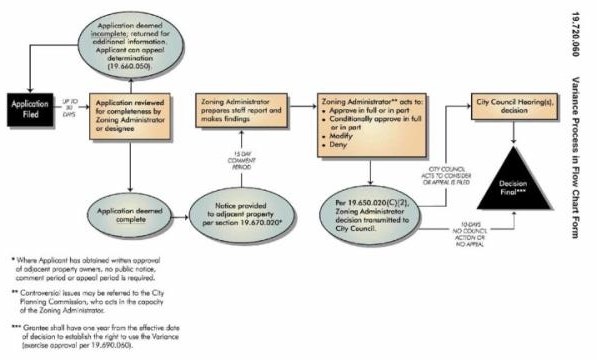
Within the General Plan the “Riverside Park” graphic is exemplary because it illustrates how urban design elements of the City’s natural open space, together with the City’s manmade elements of parkways and City parks, create a ring of open space that envelopes the entire City and connects the City in many ways.
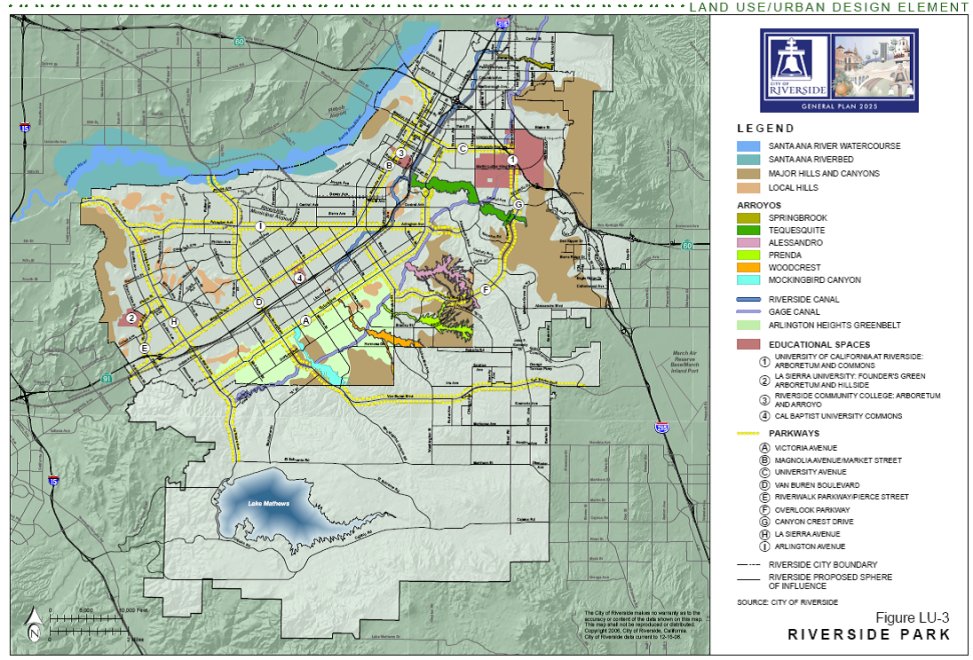
Organization
Although certain elements in the General Plan are mandated by State law, the Riverside General Plan is unique to Riverside. Based upon the community’s vision for Riverside, a number of elements have been added to reflect the spirit of Riverside. For instance, the Plan includes an Arts and Culture Element, which recognizes the future of Riverside as a thriving arts, culture, and entertainment center. The Plan also includes an Education Element, which recognizes Riverside, with its three universities and community college, as an educational center. The City added an Air Quality Element, which recognizes Riverside as a leader in clean air and a healthy environment. The City continues to include a Parks and Recreation Element and Historic Preservation Element, which reflect the values and priorities of the community.
The chapters are as follows (optional elements in bold):
- Preamble
- Introduction
Land Use and Urban Design Element - Circulation and Community Mobility Element
- Housing Element
- Housing Element Appendix 1 – Housing Technical Report
- Arts and Culture Element
- Education Element
- Public Safety Element
- Noise Element
- Open Space and Conservation Element
- Air Quality Element (includes the City’s Green Action Plan, now the Emerald City Plan)
- Public Facilities and Infrastructure Element
- Parks and Recreation Element
- Historic Preservation Element
- Glossary
- Appendix A – Implementation Plan
- Appendix B – Visioning Riverside: A Report From the Community
- Appendix C – University Neighborhood Plan*
- Appendix D – Eastside Neighborhood Plan*
*Added after initial adoption by City Council
Costs (Expected and Actual)
The General Plan 2025 Program was budgeted for $1,437,702, plus four in-house staff planners’ time (Principal, Senior, and two associates) and the additional cost to re-work the EIR ($514,168) to sustain legal challenges, including outside counsel.
The budget did change over time as the EIR had to be updated and hearings were prolonged. However, staff tried to take on as much of the burden as was possible to keep the costs down.
Adoption Process
Four advertised workshops were held with the City Planning Commission to review each of the four documents, the General Plan 2025, Zoning Code, Subdivision Code and the Citywide Design and Sign Guidelines. These workshops were advertised in the Press Enterprise and three were televised live on the local cable access channel. The workshops were designed to provide both the Planning Commission and the public with an overview of the documents.
The Planning Commission held 18 public hearings on the Program in the evenings. These hearings were well attended and the Planning Commission did a thorough job of reviewing the documents, listening to public testimony and exploring avenues of compromise or change before making their final recommendations to City Council.
City Council held three hearings in order to give attention to all Program components and approved the Program with very little discussion and minimal resistance from the public.
CEQA Review
A Program Environmental Impact Report was prepared for the General Plan 2025 Program in accordance with the California Environmental Quality Act (CEQA).
Legal Challenges
Following Planning Commission recommendation and prior to the City Council approving the Program, the EIR was revised to ensure its ability to withstand anticipated legal challenges. After City Council approval there was litigation on the Program brought about by a group called the “Friends of Riverside’s Hills,” who were concerned about environmental issues, such as grading, lighting, and density. All issues were later resolved with a Settlement Agreement and the lawsuit was dismissed.
Planning Staff and Consultants
Consultant Staff Included:
- Laura Stetson, AICP – Cotton, Bridges & Associates
- Cathy Perring – Webb & Associates
- Larry Morrison and Jean Ward – The Arroyo Group
- Sam Gennaway – MIG
- Gary Hamrick and Janet Harvey – Meyer Mohaddes Associates, Inc.
City Staff included:
- Ken Gutierrez, AICP, Planning Director
- Craig Aaron, Deputy Planning Director
- Diane Jenkins, AICP, Principal Planner
- Patricia Brenes, Senior Planner
- Barbara Bouska, Associate Planner
Accessing the Plan
All of the documents that make up the General Plan 205 Program can be purchased as books, but most people find it more convenient to view the PDFs on the City’s website (available at: http://www.riversideca.gov/planning/gp2025program/) or get a free CD from the City.
Name of Preparers of this Model
- Ken Gutierrez, AICP, Planning Director
- Diane Jenkins, AICP, Principal Planner
Name of Primary Point of Contact at the Jurisdiction
- Diane Jenkins, AICP, Principal Planner
Date Reviewed by Jurisdiction
April 26,2012
CPR Peer Reviewers
David Booher, Linda Dalton, Al Zelinka
CPR Project Team
Elaine Costello, Project Manager; Co-Chairs Cathy Creswell and Janet Ruggiero; Alexis Mena and Craig Beebe, Project Assistants
The Catalog
Our catalog contains a number of General Plan "Great Model" examples. Browse the entire catalog
Browse by Principle
- Create a Vision
- Manage Change
- Make Life Better
- Build Community Identity
- Promote Social Equity and Economic Prosperity
- Steward and Enhance the Environment
- Engage the Whole Community
- Look Beyond Local Boundaries
- Prioritize Action
- Be Universally Attainable
Browse by tag:
awards city climate-change context county equity graphics growth-management health implementation infill mature-community organization participation preservation redevelopment region rural smart-growth suburban sustainability town urban urban-design web-strategies